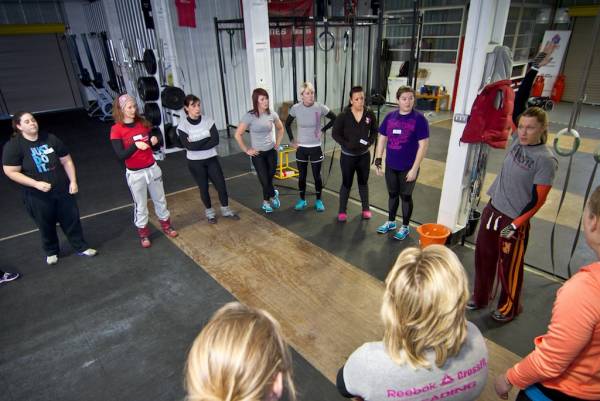No two ruts look the same. Your situation is different, and I understand that. But let me break things down for you. I’m willing to bet your training rut falls into one of these three categories:
- Physical (e.g. injury, fatigue, lethargy)
- Mental (e.g. loss of motivation, loss of direction, loss of focus)
- Technical (e.g. hit a plateau, struggling to nail down a movement, not getting stronger)
The tips I am about to give you do not assume your rut is any one of these. This is because a training low is often a combination of these factors. Which means that to get out of it, you would be wise to try a few different approaches too.
You’ll notice that some of the following tips are contradictory. In fact, a lot of them are. That’s not a mistake. It’s because these tips are not The Ultimate Answers. When your training is stuck between a rock and a hard place, these are simply ways I have found helpful to picking up that rock and unwedging yourself. Not each one will work for everyone. But they work. Some may help you shift the heavy load you are buried under easier than others. Some may not budge a thing.
If I knew more about your specific position, I could probably hazard a good guess as to which rocks to try and move first. Instead, you’re just going to have to pick up some of these and run with them. And that’s half the point. Stop thinking so much. Read, try, and apply.
Here are ten tips to take you back to base and beyond.
1. Find Some Like-Minded People

This is one of those intangible solutions that can have more benefits than you can think of. I’m not talking about the people you usually train with (in fact, they might be part of the problem.) I’m talking about people who are truly aligned to your goals and vision. If you find a group like this, work with them and stick with them. And make it your mission to find a group like this.
2. Stop Waiting For it to be Perfect
There’s never going to be a perfect time to start that new program. Life will see to that. And on that note, there’s never going to be a perfect program. Your two biggest priorities when deciding whether or not a program works for you are selecting what you are going to do and sticking to it. No matter what the program is, you will learn from it, and most likely you will get stronger. Might you have gotten even stronger doing something else? Perhaps. But by the time you have arsed about getting your perfect plan set, you could have been actually in the trenches lifting, getting stronger, and learning more than you ever would in front of a computer.
3. Play a New Sport
Each word in this sentence is meaningful. Play – get out there and have some fun. Enjoying yourself is important. New – do something novel, different, and interesting. Sport – be active. It doesn’t have to be competitive. Strongman training is perfect for this, and it will have a positive effect on the rest of your strength training. You’ll be surprised at how playing any new sport can spur thoughts, ideas, and passion for training.
4. Question Assumptions

Why do you lift the way you do? Most likely because you have always been taught that way. And that’s fair enough. But if things aren’t working, it’s as good a time as any to question those assumptions. Most of us spend our lives seeking stuff that backs up our current beliefs. Read, watch, listen, and learn from resources that are outside your usual network. Challenge your belief systems. Experiment.
5. Teach Someone
Teaching someone to do what you do will either rack you with guilt for not practicing what you preach, or make you miss what you are doing. Either way, if coaching your sport pushes you to get back into it, it’s all good. And if your client asks you to show them how it’s done, even better. You don’t want to be out of practice now, do you?
6. Do Some Specialist Work
If you have been training under a coach, that’s cool. If you haven’t, that is your first step. Coming out of a rut of any description is a good time to rethink and rebuild with some fresh input. If you have a coach, is he or she a specialist in their field? No disrespect to your current coach, but experience and expertise from a good specialist coach can give you a real boost in just a few hours, or even minutes. Consider signing up for a specialist course or taking a few one-to-one sessions with someone who is a true expert in their field.
7. Man Up
Sometimes it has to be said, and there’s nothing more to it. Sort your sh*t out, man the f*ck up, and get yourself off your sofa, office chair, or high horse. No time? That’s the biggest excuse of them all.
8. Accept Help

Stop thinking that you can, or need to, do this by yourself. I bet you already have a great support network around you. But you have to let them help you. The first step is asking.
9. Actually Listen
The next step is actually listening. Don’t ask for help because I told you to, and then pay little attention to what is being said. Don’t be that person. Take it in, filter it, and put the good stuff to use.
10. Keep it Simple
Yes, most of these tips are pretty damn simple. Stop overcomplicating it. The strength training industry is full of people trying to convince you that they own the secrets to the strength training world. Well, they don’t. Because 1.) You do, and 2.) There aren’t any. Do not underestimate the power of the simple stuff.
If you read through these and for all of them thought “that’s not going to work,” that’s not okay. There’s no helping you until you’re ready to help yourself.
If you read through these and for some of them thought “that’s not going to work,” that’s okay. Different tricks will work for different types of training ruts, situations, and people. But I want you to do me a favor. By all means try the ones you think might work. But please also pick three that you think won’t work and try them. Let me know which ones worked for you.
Photos 1 and 3 courtesy of Shutterstock.
Photo 2 courtesy of Karl Buchholtz Photography.
Photo 4 courtesy of CrossFit Impulse.






